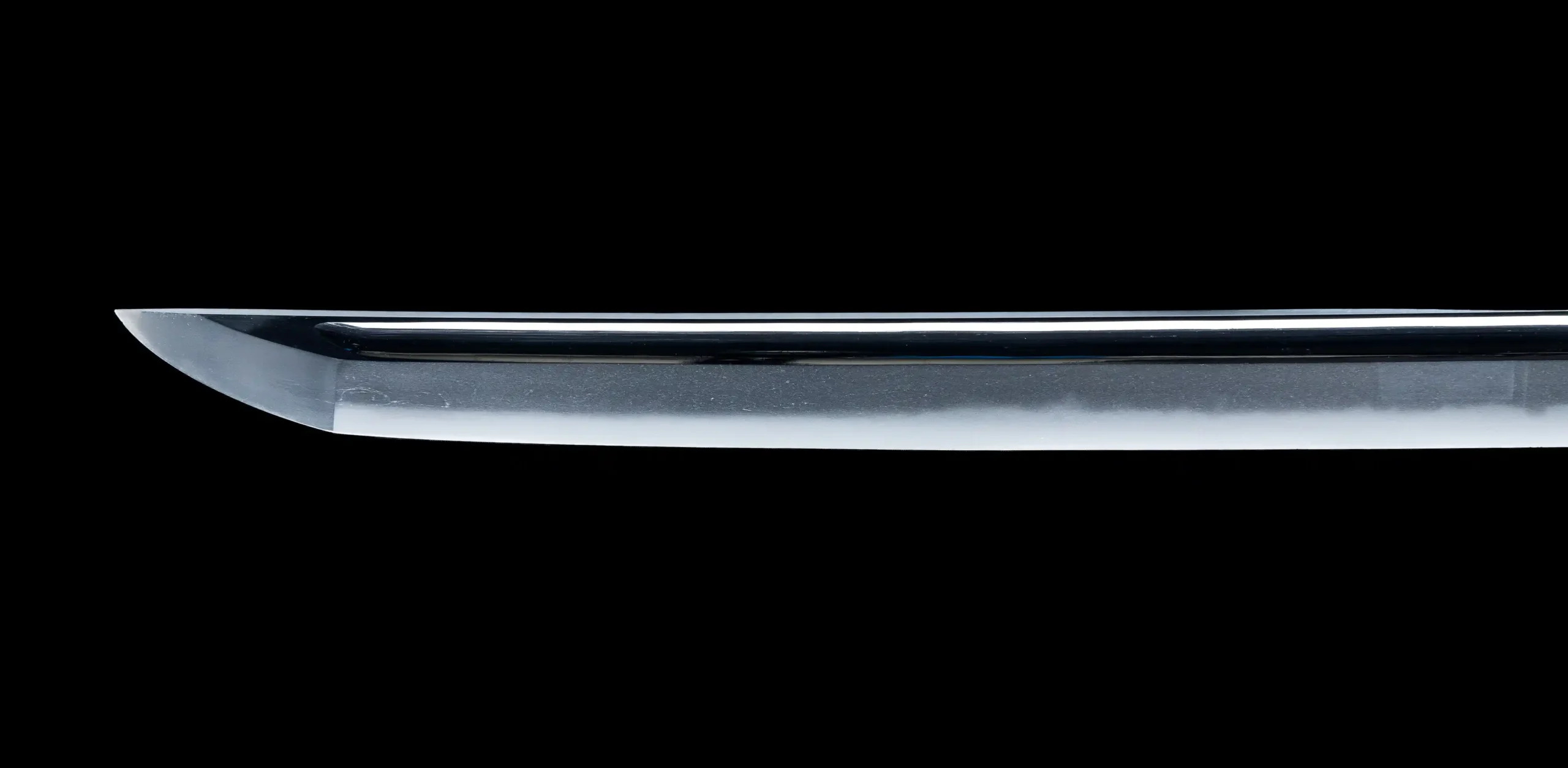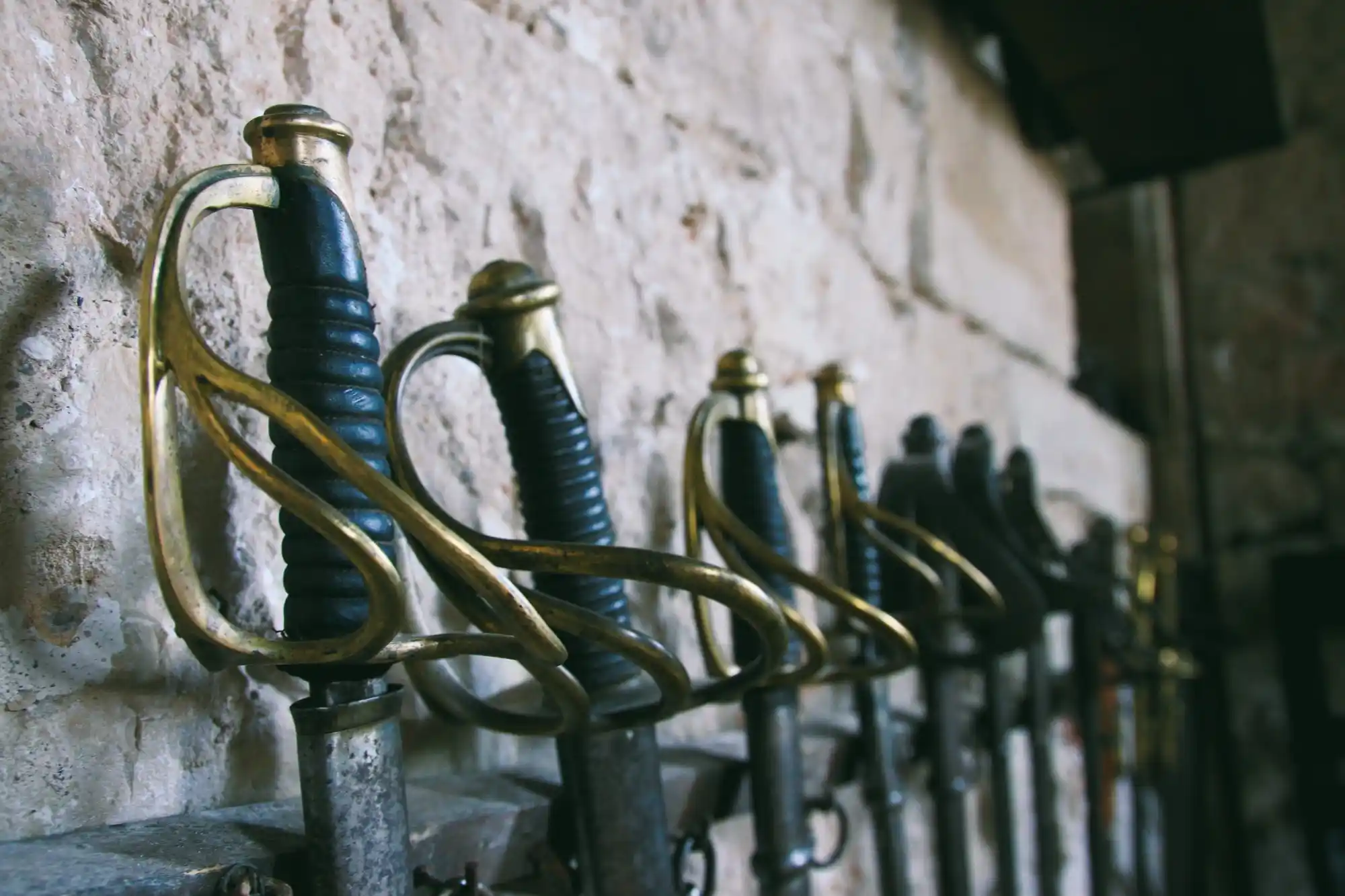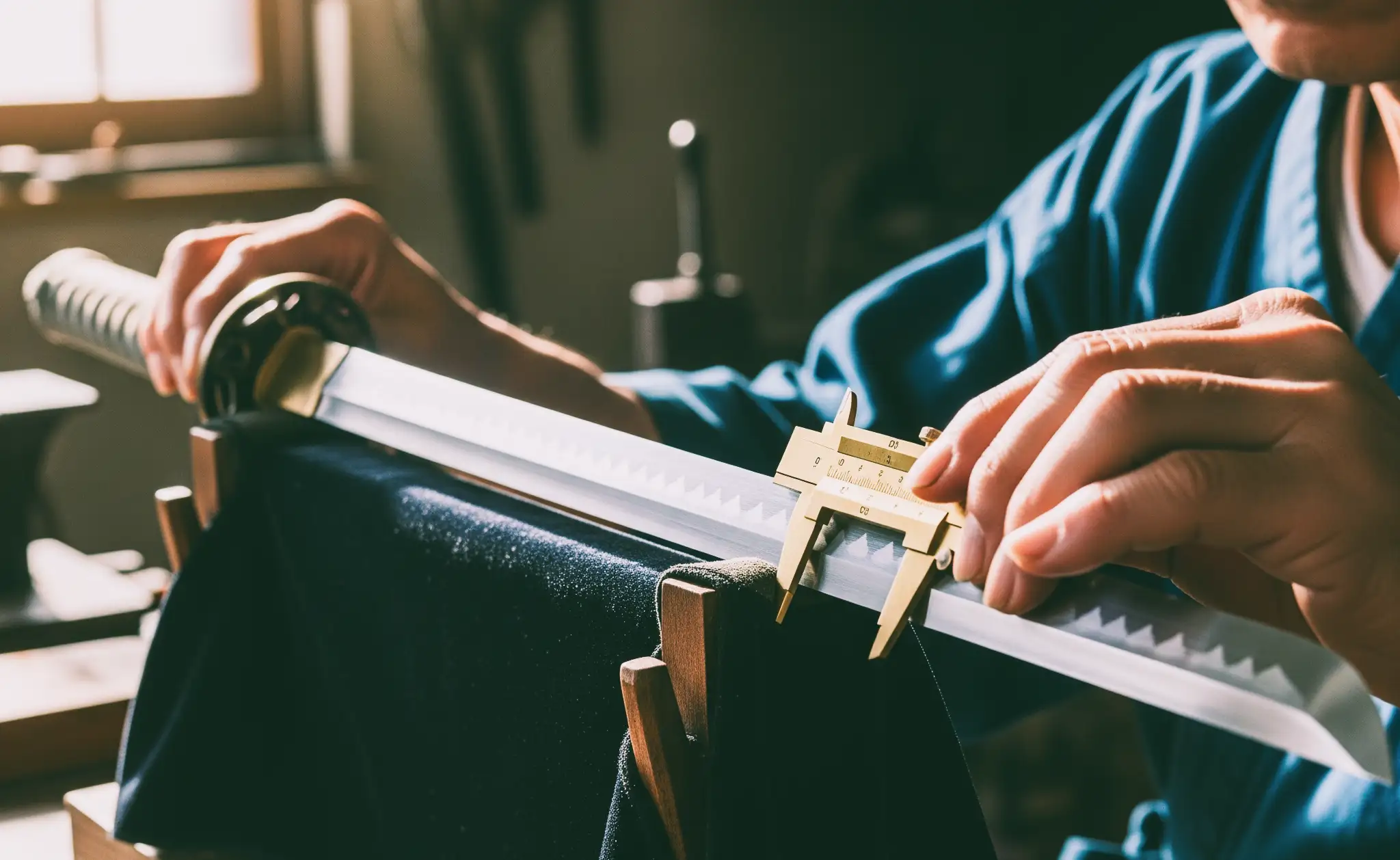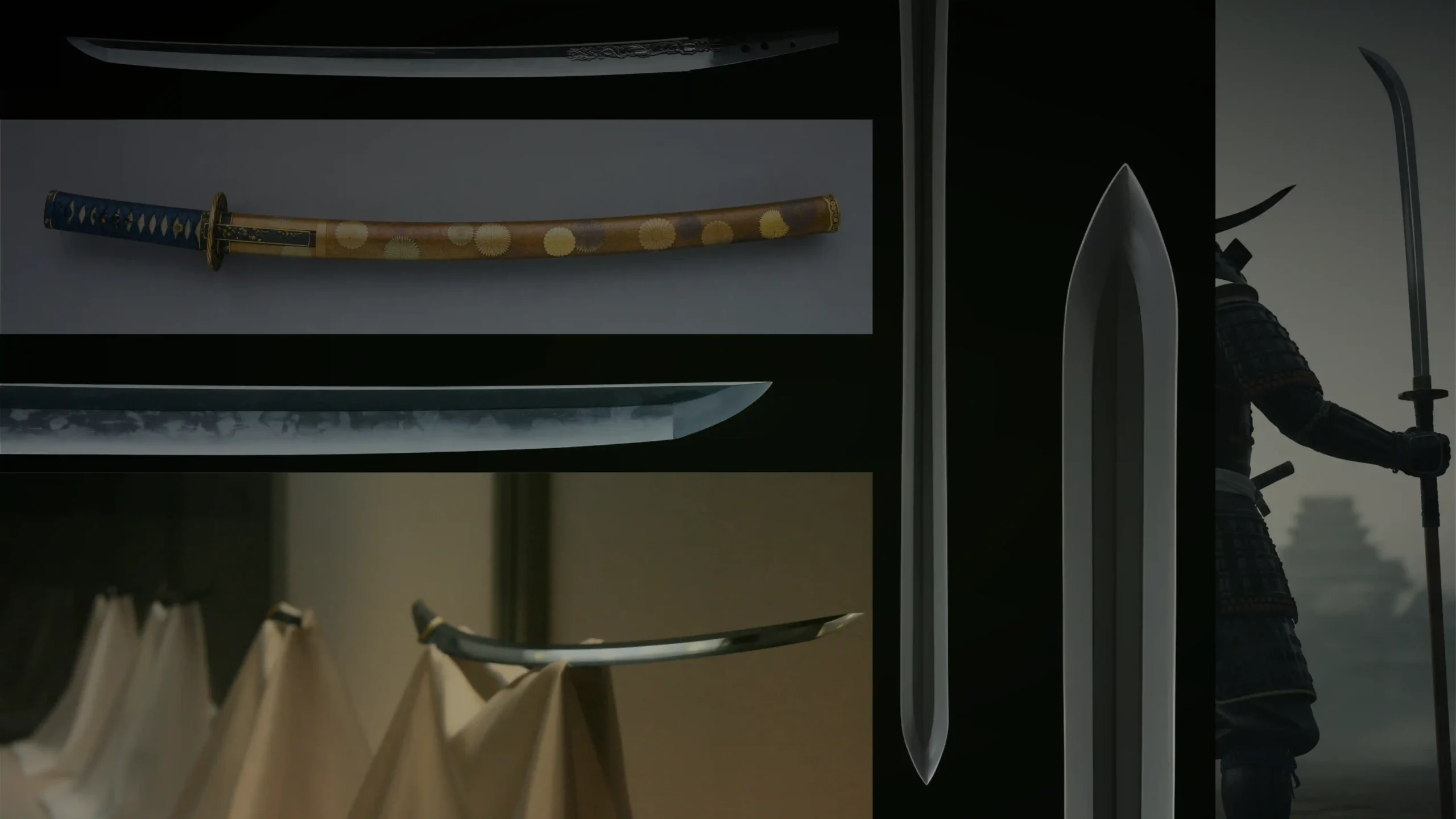We may earn revenue from the products available on this page and participate in affiliate programs. Learn more >
When it comes to displaying swords, there are many different ways. However, there are a few things you should know when displaying a samurai katana in particular.
Displaying a Katana on a Katana Kake
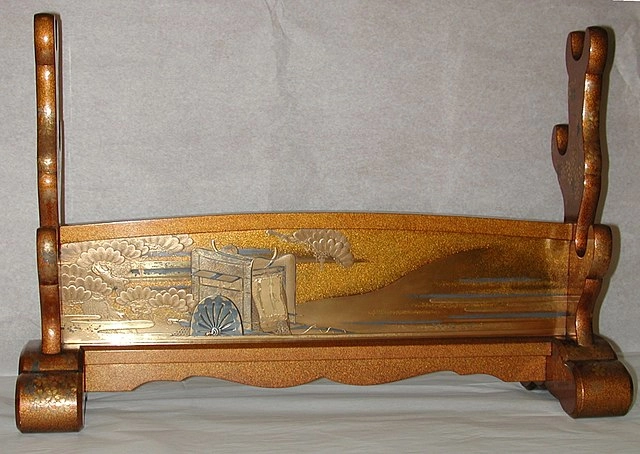
The katana kake is a Japanese sword stand used by samurai to place their swords when they were not in use. According to sources, samurai began using katana kake to store their swords indoors during the Edo period. It’s usually made of wood, often lacquered or polished, and can hold one or more swords depending on the design.
The stand usually has curved arms or hooks that cradle the scabbard (saya) securely without damaging it. Traditional ones were often beautifully crafted and the finish often matched the sword’s aesthetic.
Cutting Edge Facing Upwards
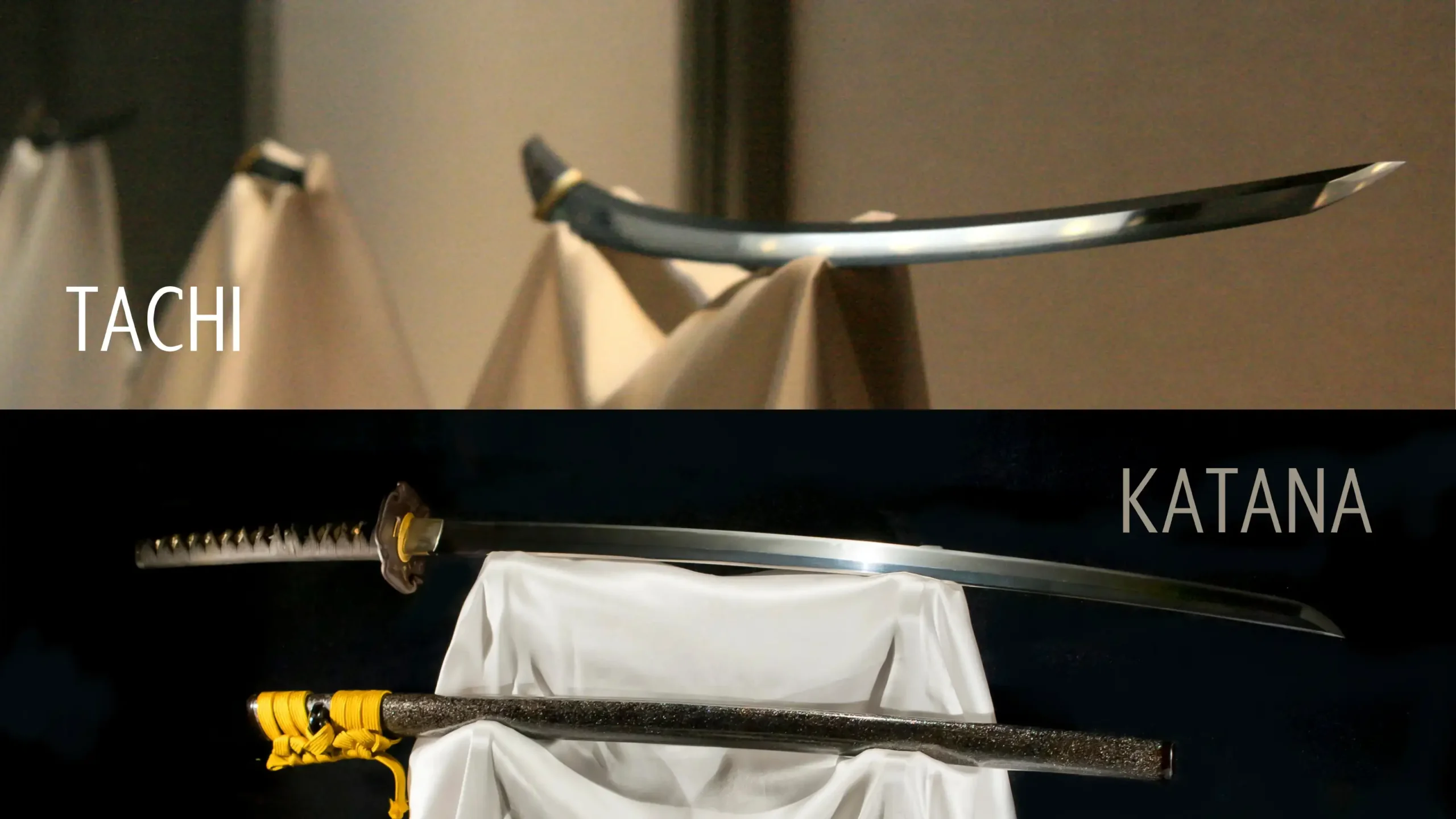
When you place your katana on the kake, make sure the cutting edge faces up. This is because samurai swords were traditionally displayed the same way the samurai wore them. The katana was worn edge up, so it’s displayed in the same way.
In museums or martial arts schools, this is important because it helps enthusiasts distinguish whether the sword is a katana or another type, such as a samurai tachi for example, which is traditionally displayed with the edge facing down.
Read: Katana vs Tachi Comparison
Handle on The Left Side
And, there are a few reasons for this setup. Traditionally, this reflects a form of peace. The right side is the fastest way to access the sword, while the left requires more movement to draw, signaling no aggressive intent in a way.
Also, when the handle is on the left, all the beautiful ornamentation like the sageo cord and kurigata is facing outward for guests to see.
Another reason for this position is that the mei (signature) on the sword, which is typically found on the side known as the omote, will also be visible when the handle is on the left.
Displaying a katana in the traditional way is mainly about showing respect. It’s often followed in dojo settings or museums. In reality, it doesn’t make a big difference, so feel free to display it however you like at home.
How About Displaying Multiple Swords?
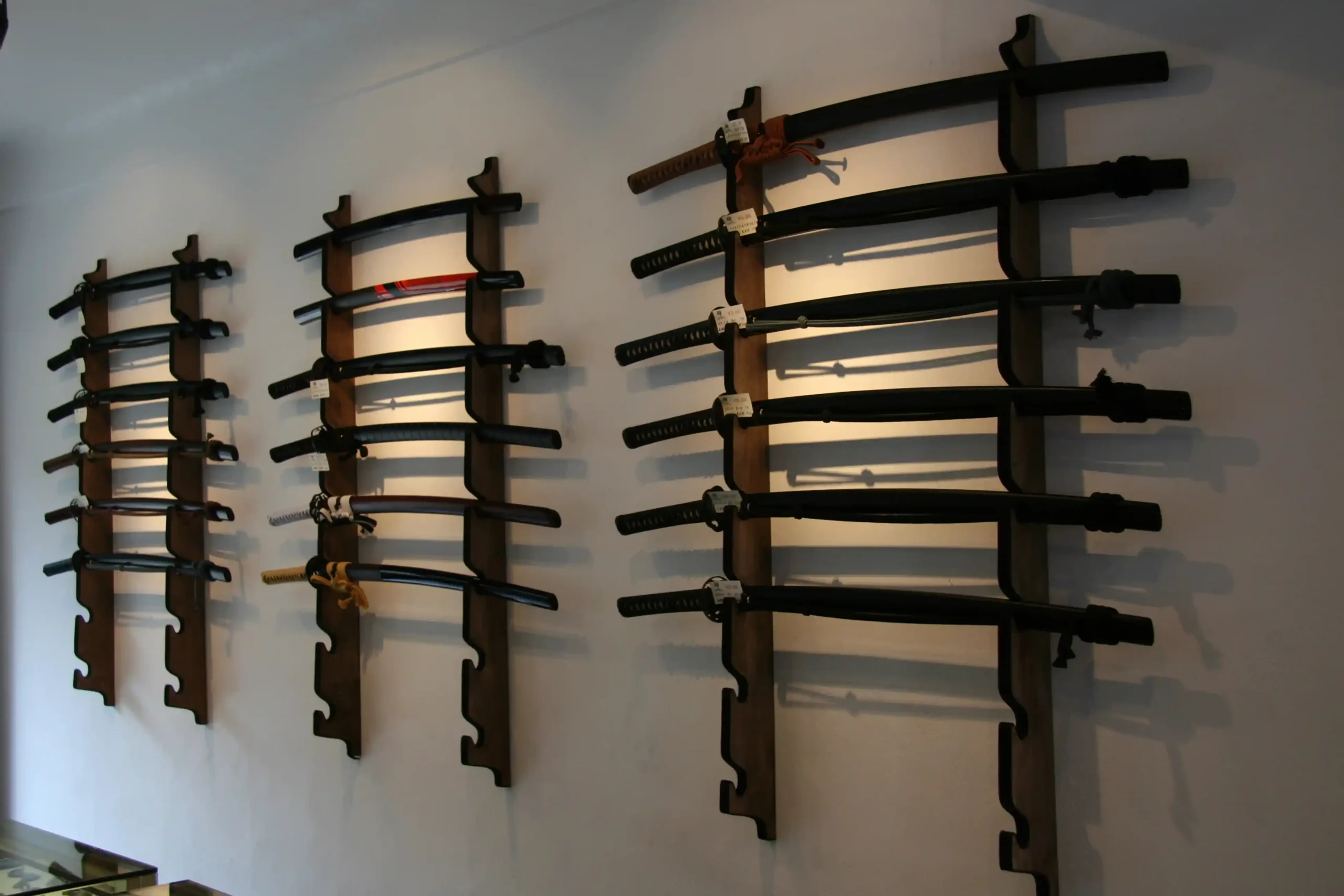
A common question is how to display multiple swords or how to display a katana and wakizashi for example, since most holders like to have a daisho set as part of their collection. Let’s say you have a katana and a wakizashi. First, you’ll need a two-layer stand for this. The wakizashi is placed on top and the katana on the bottom, following the traditional daisho arrangement.

If you also have a tanto, then the tanto goes on top, the wakizashi in the middle, and the katana at the bottom. The direction is the same for all. In fact, nowadays this rule is not much followed. Generally, katanas are displayed at the top since they are the primary sword and because they look better when placed at the top.
When it comes to multiple swords, you will need a stand or rack with multiple layers depending on how many swords you have or if you are thinking about expanding your collection. If you have a mix of tachis and katanas for example, display all katanas (edge up) first and tachis (edge down) seperated, all with the handles turned to the left.
Last Words
A proper katana display is a great way to honor both the sword’s beauty and its history. You can display your sword however you want in your home, but if you want to follow tradition, you can follow some easy practical tips.
As you display your blade, don’t forget to clean and maintain it regularly to ensure it stays in top condition. A well-maintained sword will look even better and last longer.


